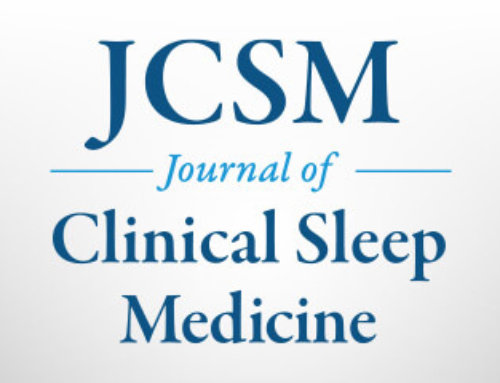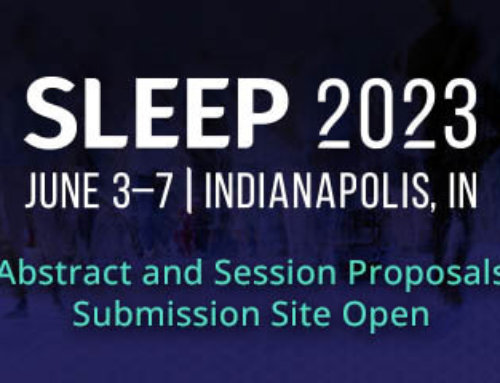EMBARGOED FOR RELEASE
June 10, 2008, at 12:01 a.m.
CONTACT:
Kathleen McCann
(708) 492-0930, ext. 9316
WESTCHESTER, Ill. – Obstructive sleep apnea (OSA) patients are more likely to comply with continuous positive airway pressure (CPAP) for longer periods of time if they receive their treatment from a sleep center accredited by the American Academy of Sleep Medicine (AASM), according to a research abstract that will be presented on Tuesday at SLEEP 2008, the 22nd Annual Meeting of the Associated Professional Sleep Societies (APSS).
The study, authored by Siva Ramachandran, MD, focused on 55 consecutive patients in an AASM accredited sleep center with OSA whose CPAP compliance was less than four hours at their one-month follow-up visit. All subjects were evaluated and counseled by a board certified sleep specialist and a certified respiratory therapist and were educated about OSA. CPAP desensitization and mask fittings were conducted within the center, if indicated, and patients had access to specialized CPAP clinics. All patients were offered follow up with their downloadable compliance card and had open access to their sleep specialist by telephone, e-mail or by clinic visits. There was close collaboration with center staff and DME providers in specialized multidisciplinary CPAP clinics. Patients also had access to a 24 hour CPAP hot line into the center with close tracking of problems within 24 hours. In some patients referring physicians actively collaborated with center physicians to advance optimal use of CPAP.
According to the results, 34 patients (61 percent) were compliant and were followed up for six months. CPAP compliance improved in these patients and more patients availed of mask changes and desensitization in the compliant group. Older age was related to increasing compliance.
“This study was unique as it targeted patients with high risk for CPAP failure, in a community setting with resources identified within the center, and was developed in a longitudinal model of patient care,” said Dr. Ramachandran. “Access to specialized services with close follow-up in an AASM accredited center improves long term CPAP compliance in patients with high risk of CPAP failure. Patients in the older age group are particularly responsive to multimodal CPAP rescue services and are a model for development in sleep centers.”
OSA is a sleep-related breathing disorder that causes your body to stop breathing during sleep. OSA occurs when the tissue in the back of the throat collapses and blocks the airway. This keeps air from getting into the lungs. It is estimated that four percent of men and two percent of women have OSA, and millions more remain undiagnosed.
On average, most adults need seven to eight hours of nightly sleep to feel alert and well-rested.
The AASM offers the following tips on how to get a good night’s sleep:
- Follow a consistent bedtime routine.
- Establish a relaxing setting at bedtime.
- Get a full night’s sleep every night.
- Avoid foods or drinks that contain caffeine, as well as any medicine that has a stimulant, prior to bedtime.
- Do not go to bed hungry, but don’t eat a big meal before bedtime either.
- Avoid any rigorous exercise within six hours of your bedtime.
- Make your bedroom quiet, dark and a little bit cool.
- Get up at the same time every morning.
First introduced as a treatment option for sleep apnea in 1981, continuous positive airway pressure (CPAP) is the most common and effective treatment for OSA. CPAP provides a steady stream of pressurized air to patients through a mask that they wear during sleep. This airflow keeps the airway open, preventing the pauses in breathing that characterize sleep apnea and restoring normal oxygen levels.
CPAP Central (www.SleepEducation.com/CPAPCentral), a Web site created by the AASM, provides the public with comprehensive, accurate and reliable information about CPAP. CPAP Central includes expanded information about OSA and CPAP, including how OSA is diagnosed, the function of CPAP, the benefits of CPAP and an overview of what to expect when beginning CPAP, the position of experts on CPAP, and tools for success. CPAP Central also features an interactive slide set that educates the public about the warning signs of OSA.
Those who think they might have OSA, or another sleep disorder, are urged to consult with their primary care physician or a sleep specialist.
The annual SLEEP meeting brings together an international body of 5,000 leading researchers and clinicians in the field of sleep medicine to present and discuss new findings and medical developments related to sleep and sleep disorders.
More than 1,150 research abstracts will be presented at the SLEEP meeting, a joint venture of the AASM and the Sleep Research Society. The three-and-a-half-day scientific meeting will bring to light new findings that enhance the understanding of the processes of sleep and aid the diagnosis and treatment of sleep disorders such as insomnia, narcolepsy and sleep apnea.
SleepEducation.com, a patient education Web site created by the AASM, provides information about various sleep disorders, the forms of treatment available, recent news on the topic of sleep, sleep studies that have been conducted and a listing of sleep facilities.
Abstract Title: Rescue CPAP in a Vulnerable Population: Does Intense Services in an AASM Accredited Sleep Center Matter?
Presentation Date: Tuesday, June 10
Category: Healthcare Services, Research & Education
Abstract ID: 1073
# # #








